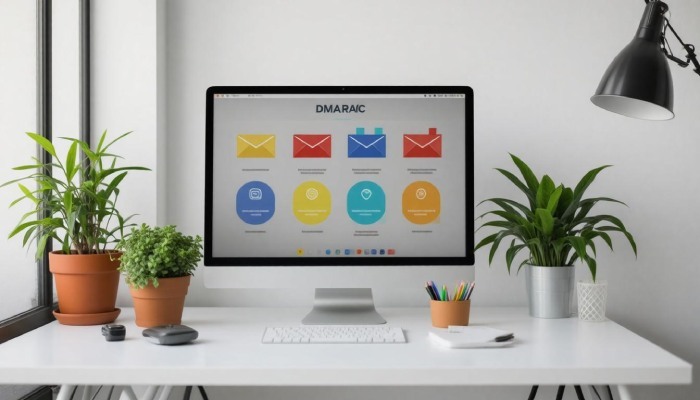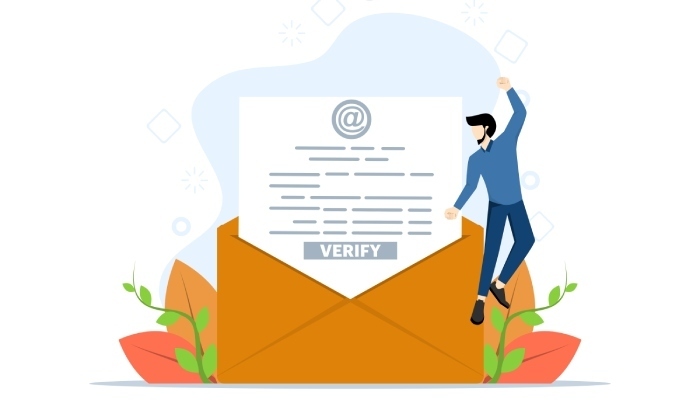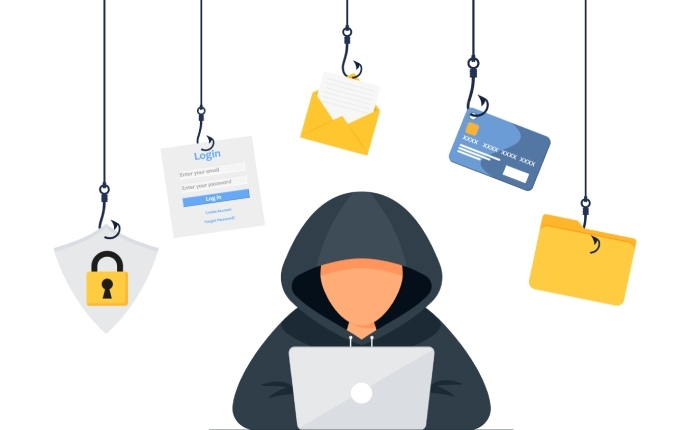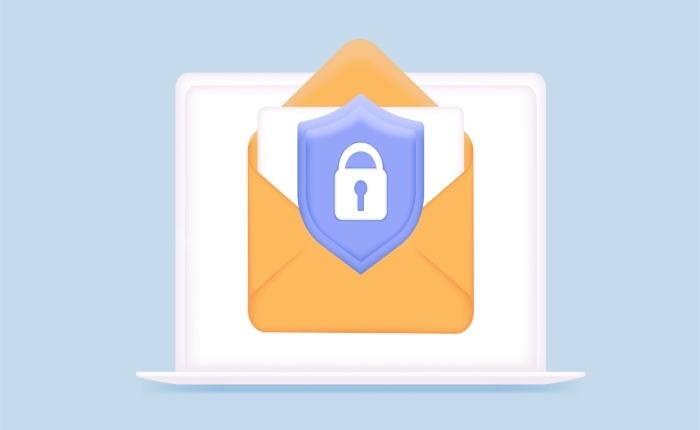In an age where our inboxes are flooded with emails from various sources, understanding how to protect our domains has never been more crucial. Have you ever wondered how some emails land safely in your inbox while others get flagged as spam or worse? That’s where DMARC comes in, acting as a guardian for our email communications. Think of it as the security guard checking IDs before letting anyone in. In this article, we’ll break down what DMARC is, why it’s essential for keeping both personal and organizational emails safe, and how you can set it up effectively. Whether you’re a business owner or someone simply looking to shield yourself from email scams, grasping the basics of DMARC could make all the difference.
A DMARC policy defines how email receivers should handle messages that fail authentication checks, with three main options available: ‘none’ (monitoring only), ‘quarantine’ (marking emails as suspicious), and ‘reject’ (preventing delivery of non-compliant emails). Selecting the appropriate DMARC policy is crucial in protecting your domain from phishing attacks and ensuring that your legitimate emails reach their intended recipients.

What is DMARC?
DMARC, which stands for Domain-based Message Authentication, Reporting, and Conformance, is an essential email authentication protocol that plays a critical role in keeping our inboxes secure. At its core, DMARC tackles the issue of email spoofing—a technique employed by hackers to send deceptive emails that masquerade as messages from trustworthy sources. Imagine receiving an email that seems to come from your bank but is actually a trap set by cybercriminals; this is where DMARC comes into play.
The magic of DMARC lies in its ability to leverage established email authentication methods like SPF (Sender Policy Framework) and DKIM (DomainKeys Identified Mail). By employing these protocols, DMARC validates the authenticity of emails originating from a specific domain.
It does this by checking whether the sender’s IP address aligns with the domain’s specified sending servers (SPF) and whether the message has a valid digital signature (DKIM). This multi-layered approach bridges the existing protocols and empowers email receivers to create policies not just for identifying impostors but also deciding how to respond to such threats.
For instance, if a malicious actor attempts to send out an email pretending to be your boss, DMARC can identify this deceitful attempt through these checks. Should the email fail verification, the receiving server can act accordingly—whether that means rejecting the email outright or moving it into a quarantine space.
Understanding how to create DMARC record helps organizations implement effective email authentication policies. This process strengthens trust in email communications and reduces the chances of falling victim to phishing attacks.
Practical Example
Take your financial institution, for example. If someone tries to impersonate your bank by sending you an email requesting sensitive information, DMARC steps in to verify the legitimacy of that email. Should it raise red flags—perhaps due to misalignment detected through SPF or DKIM—it can prompt the receiving server to reject or flag that email as suspicious.
This protective barrier helps ensure that only genuine communications reach you, significantly lowering the risk of unauthorized access or identity theft. In a world where cyber threats constantly evolve and become more sophisticated, implementing DMARC isn’t just an option—it’s a crucial step toward safeguarding both personal and organizational email communications.
By recognizing how this protocol works, we can better appreciate its role in enhancing overall security measures related to digital communication. Now let’s explore how adopting such measures can lead to numerous advantages.
Benefits of Implementing DMARC
First and foremost, one of the standout advantages of implementing DMARC is its powerful contribution to email security. In an era where phishing attacks and email spoofing are rampant, DMARC acts as a robust line of defense against these threats. According to a 2023 report by Cybersecurity Ventures, organizations that applied DMARC enjoyed an impressive 50% reduction in successful phishing attempts. This figure highlights the immediate impact of proper email authentication, reassuring organizations that they significantly decrease their vulnerability to malicious attacks.

Enhanced Email Security
Beyond merely reducing phishing attempts, DMARC enhances overall email reliability. When senders implement this protocol, it verifies the legitimacy of emails being sent from their domain before reaching the recipient’s inbox. By filtering out unauthorized communications, it protects valuable sensitive information and maintains the integrity of communication streams. If you’ve ever experienced frustration over spam or misleading messages hitting your inbox, you can appreciate how impactful this security measure truly is.
Improved Brand Trust
Now let’s consider something even more critical – brand trust. In today’s marketplace, building confidence with customers and partners is vital for any organization. When businesses utilize DMARC effectively, they ensure that only legitimate emails – verified through proper authentication checks – reach their audience. This proactive approach fosters a sense of security among clients, leading to greater engagement and higher open rates on marketing campaigns. Imagine receiving emails without doubts about their authenticity; it creates a much more positive experience for potential customers.
Reporting and Monitoring
Additionally, DMARC isn’t just about protection; it also provides insightful reporting mechanisms. With its monitoring features, organizations gain access to detailed reports showing which emails successfully pass or fail authentication checks. This data empowers businesses to make informed decisions about potential misuse of their domain while allowing them to spot inconsistencies and rectify configurations quickly. Such transparency is pivotal for timely adjustments and reinforces organizational accountability in communication practices.
Knowing these benefits encourages more businesses to set up DMARC systems. The subsequent section will detail the necessary actions required to implement this essential framework within your organization.
Steps to Set Up DMARC
The first step in establishing a robust DMARC policy is to ensure that both SPF (Sender Policy Framework) and DKIM (DomainKeys Identified Mail) are configured correctly for your domain.

Think of SPF as a bouncer at a club who verifies that only specific IP addresses (your authorized email servers) are allowed in to send emails on behalf of your domain. Meanwhile, DKIM acts as a digital signature, like signing your name on the dotted line of a contract, allowing recipients to verify that the email really came from you and hasn’t been tampered with on its journey.
Now that you have your SPF and DKIM set up, it’s time to create your DMARC record.
Step 2 – Create a DMARC Record
Creating a DMARC record involves adding a text entry (TXT) in your domain’s DNS settings. This record informs receiving mail servers how to handle emails that fail authentication checks.
For instance, a typical DMARC record might look like this:
v=DMARC1; p=none; rua=mailto:aggregatereport@yourdomain.com; ruf=mailto:forensicreport@yourdomain.comThe p tag sets your policy—starting off with “none” will collect data without affecting mail delivery. But don’t worry! You can always adjust it later.
Key Components of a DMARC Record:
- v=DMARC1: Specifies the version of DMARC being used.
- p=<policy>: This tells email receivers what action to take when they receive a message that fails authentication (“none,” “quarantine,” or “reject”).
- rua=mailto:<aggregate report URI>: This is where aggregate reports will be sent, providing insights into email traffic.
- ruf=mailto:<forensic report URI>: This is for detailed failure notifications, allowing you to see why certain emails failed.
Once your DMARC record is in place, you’ll want to begin testing it to avoid disrupting your workflows.
Step 3 – Test and Gradually Enforce the Policy
Begin with caution by setting your DMARC policy to “none.” This way, you can gather information about which emails pass or fail without risking any disruptions.
Think of it as a dress rehearsal before the actual show—this gives you valuable insight into your email practices without creating chaos. As you review the reports generated during this initial phase, you’ll start identifying sources of email failures or potential security issues.
With those insights in hand, progressively tighten your policy from “none” to “quarantine” and ultimately to “reject.” Each adjustment increases protection against spoofing while ensuring legitimate emails continue to flow unhindered.

In successfully completing these steps—configuring SPF and DKIM, creating a clear DMARC record, and testing progressively—you establish vital protections for your email communications. Next, we turn our attention to the fundamental ways in which the DMARC framework authenticates messages and enhances security.
How DMARC Verifies Emails
DMARC employs a combination of techniques to authenticate the legitimacy of incoming emails, ensuring users know exactly whom they are communicating with and protecting against malicious threats.
SPF and DKIM Checks
At the heart of DMARC’s verification process are two key protocols: SPF (Sender Policy Framework) and DKIM (DomainKeys Identified Mail).
SPF validates whether an email is coming from an authorized IP address associated with a specific domain. Think of SPF as a gatekeeper: it checks the sender’s credentials before allowing the email through.
On the other hand, DKIM serves as a digital fingerprint, ensuring that the email has not been tampered with during its journey to the recipient. This validation process involves verifying the digital signature attached to the email, which guarantees its integrity and authenticity.
Alignment Requirement
Yet merely passing these checks isn’t enough; alignment is equally important. In simple terms, the domain used in the “From” address must correspond to the domain validated by either SPF or DKIM.
If an email successfully passes one of these checks but fails to align with the “From” address, it still won’t clear DMARC’s stringent requirements. Conversely, if both SPF and DKIM checks fail, the email will not pass DMARC verification at all.
That’s when the pre-defined policy kicks in: messages can be treated according to rules set by the domain owner—allowing them to either monitor (none), quarantine suspicious messages (quarantine), or outright reject them (reject).
Ensuring these steps are correctly configured falls under the best practices for DMARC configuration. Correctly defining alignment rules and implementing authentication techniques offers a robust shield against potential phishing risks and impersonation attacks.

DMARC’s creation of a multi-layered authentication system provides invaluable protection for organizations while also improving overall email deliverability. By adhering to these stringent guidelines involving SPF and DKIM checks, as well as alignment requirements, businesses can significantly mitigate their risk of becoming victims of email spoofing or cyberattacks.
As we continue exploring this essential framework, it’s vital to consider actionable steps that can enhance your DMARC strategy effectively.
Best Practices for DMARC Configuration
Implementing DMARC correctly is essential for maximizing its benefits, and understanding how to configure it effectively can save you from potential issues. One of the first steps is setting up Subdomain Policies, which should not be overlooked. For enhanced security, it’s advisable to establish separate DMARC policies for both your main domain and any subdomains. This precaution protects your brand thoroughly by preventing malicious actors from exploiting less-secure, unmonitored subdomains that may not receive the same level of attention as your primary domain.
However, properly managing these policies requires intentionality and a strategic approach.
Starting with Gradual Policy Enforcement is perhaps the most prudent way to implement DMARC. Beginning with a policy set to “none” lets you monitor email traffic without disrupting the flow of legitimate mail. This initial phase grants visibility into what emails are being sent, who they are coming from, and whether they comply with the authentication protocols in place. Transitioning from “none” to “quarantine,” and finally to “reject” is a step-by-step strategy that progressively tightens controls on email authentication. This method significantly reduces phishing attempts while ensuring that legitimate communications remain unaffected during this transition period.
Remember, patience is key. Rushing into strict policies can backfire if legitimate emails inadvertently get blocked.
With strong foundational practices in place, ongoing vigilance becomes critical for continued success.
This brings us to the importance of Regular Monitoring and Reporting. It’s crucial to review DMARC reports frequently—think of it as taking your car in for routine checkups. Analyzing these reports helps identify potential vulnerabilities or misconfigurations that might compromise your email security. The ability to adjust your policies based on these insights ensures that your DMARC configuration remains effective against evolving threats. Moreover, monitoring allows you to spot anomalies in email traffic that could suggest unauthorized access attempts or other suspicious activities.

Here are some specific recommendations for regular monitoring:
- Schedule periodic reviews—weekly or bi-weekly would be ideal.
- Utilize DMARC monitoring tools like Dmarcian or Agari for easier analysis.
- Act on alerts promptly before minor issues escalate into major problems.
While these best practices lay a powerful foundation for securing your email communications, it’s important to recognize that challenges during implementation can arise unexpectedly.
Overcoming DMARC Challenges
Even with DMARC’s advantages, many organizations face specific hurdles that can undermine their email authentication efforts. One prominent challenge arises from email forwarding. When emails are forwarded, the original sender’s SPF (Sender Policy Framework) alignment can break down, leading to the dreaded false positive—a scenario where legitimate messages are erroneously flagged as spam or rejected.
To tackle this issue head-on, consider employing DKIM (DomainKeys Identified Mail) signatures. Unlike SPF, DKIM operates on a cryptographic basis that remains intact even when emails are forwarded, helping to ensure that your messages maintain authenticity no matter the journey they take through various inboxes.
Another challenge surfaces when dealing with third-party services that send emails on your behalf, such as marketing automation tools. These services may not be pre-configured for DMARC compliance, which can lead to delivery failures if they’re not properly authenticated.
Therefore, it’s vital that you work collaboratively with these providers to establish suitable authentication settings. This may involve adjusting DKIM keys and ensuring that your organization’s SPF record includes those third-party sending domains.
As we navigate these technical complexities, it’s important to remember that maintaining a robust DMARC policy isn’t a one-time event; it requires ongoing diligence and repetition. You’ll want to continuously monitor and adjust your policies in response to changing practices within email communications. Regularly updating your SPF records, keeping tabs on DKIM key rotations, and reviewing DMARC reports help ensure the continued efficacy of your policy. By incorporating these proactive measures, you can respond swiftly to threats and maintain high levels of email deliverability.

Here’s a quick summary of potential challenges along with their corresponding solutions:
| Challenge | Solution |
| Email Forwarding Issues | Use DKIM signatures |
| Third-party Service Compliance | Coordinate with service providers |
| Regular Maintenance Requirements | Schedule regular reviews |
Addressing these challenges will empower organizations not just to deploy DMARC effectively but also to harness its full potential in securing their email environments. Through vigilance and collaboration, you can cultivate an adaptable approach towards email security that keeps ahead of the ever-evolving threat landscape.
In conclusion, understanding and implementing effective DMARC policies is essential for maintaining secure email communications. Your diligence today will pay off tomorrow in protecting your organization from email-based threats.
